Abstract
A patient is described who had a functional deficiency of the C8 complement component. His serum contained abnormal C8 which lacked some of the antigenic determinants of normal C8. The defect was associated with recurrent meningococcal infections due at different times to at least two strains. The patient's serum contained antibodies to meningococci and could induce phagocytosis and intracellular killing of the cocci by polymorphs. However, the serum was bactericidal only after the addition of C8-containing serum. As the patient did not give a history of susceptibility to other pyogenic organisms and has normal polymorph function, the circumstances of meningococcal infection must be unusual in that the plasma bactericidal activity critically determines the outcome: it may be that if large numbers of meningococci are not killed in the plasma, the polymorphs are overwhelmed.
Full text
PDF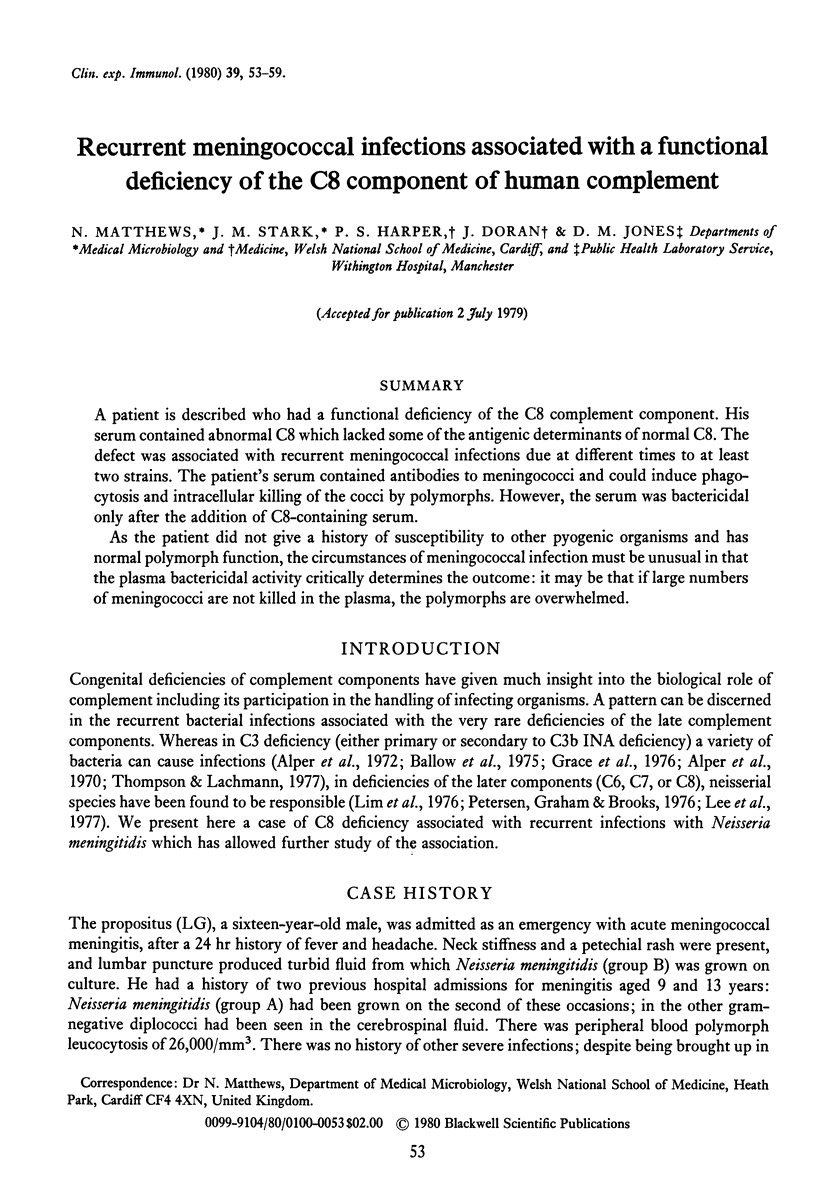
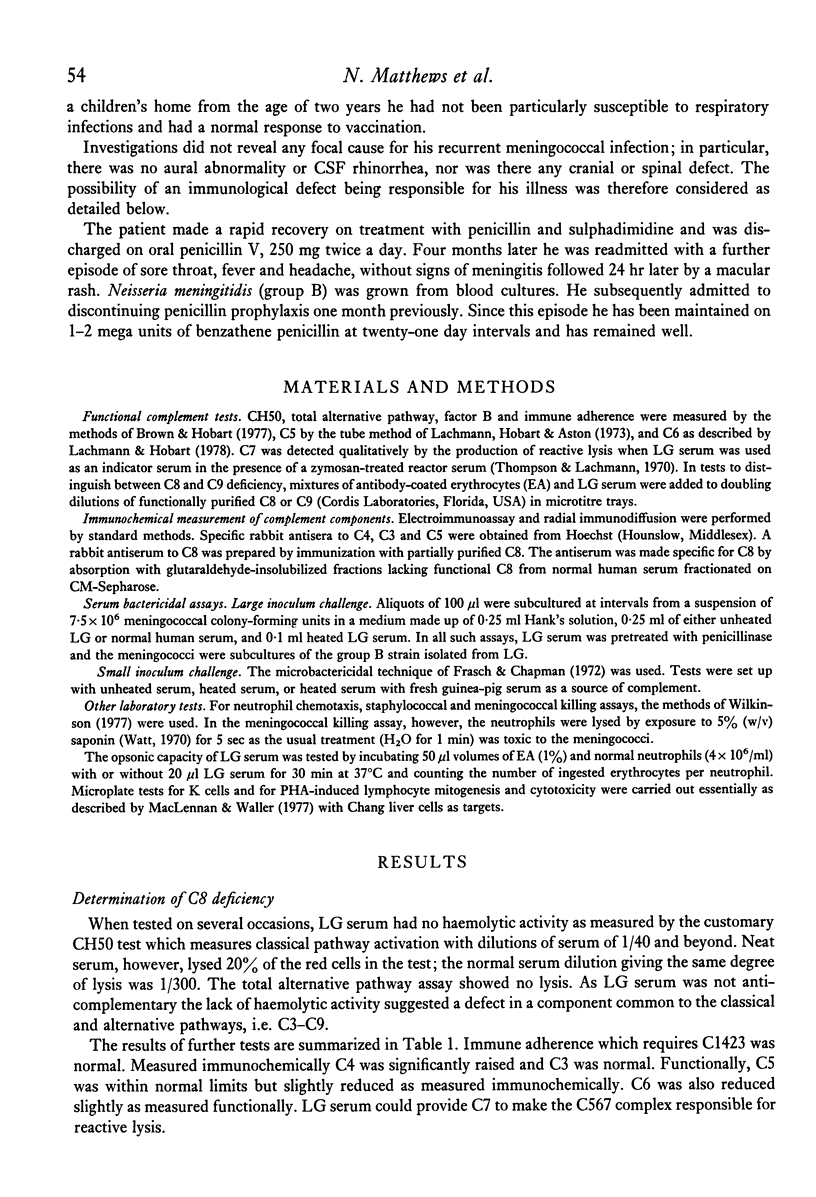

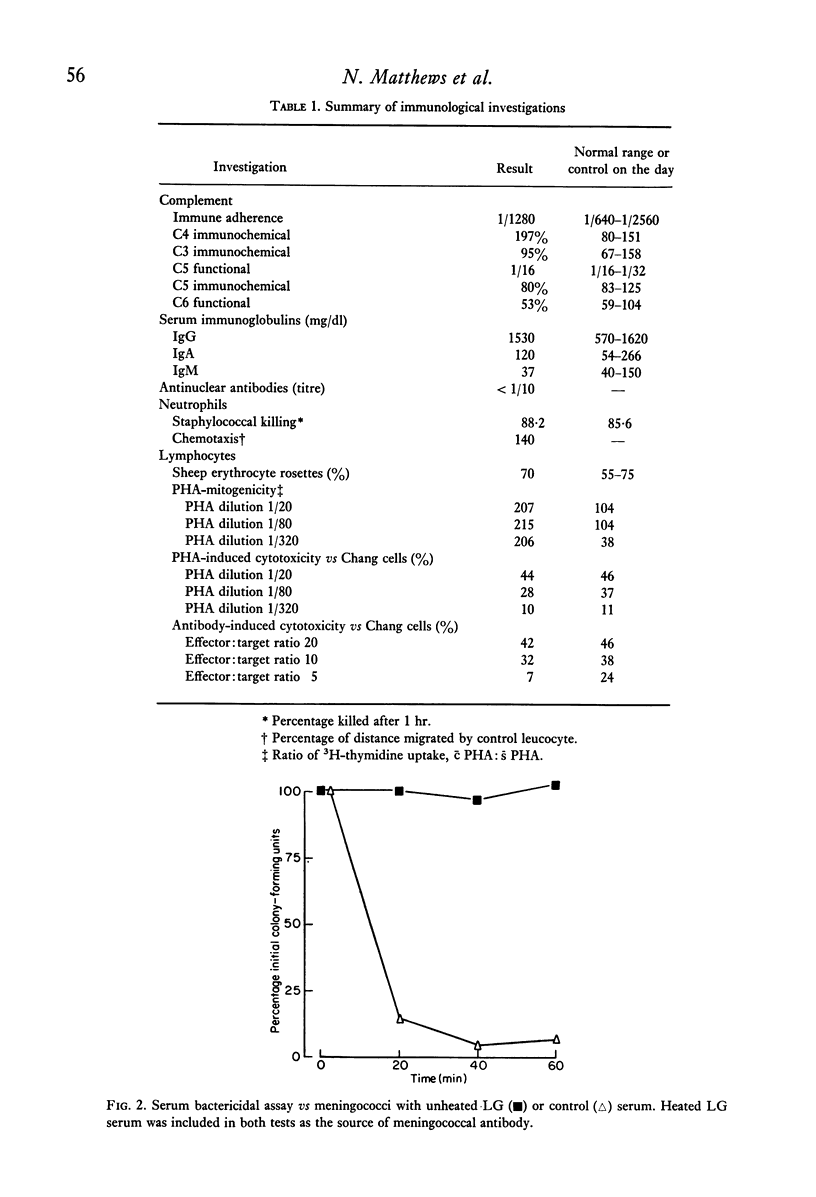
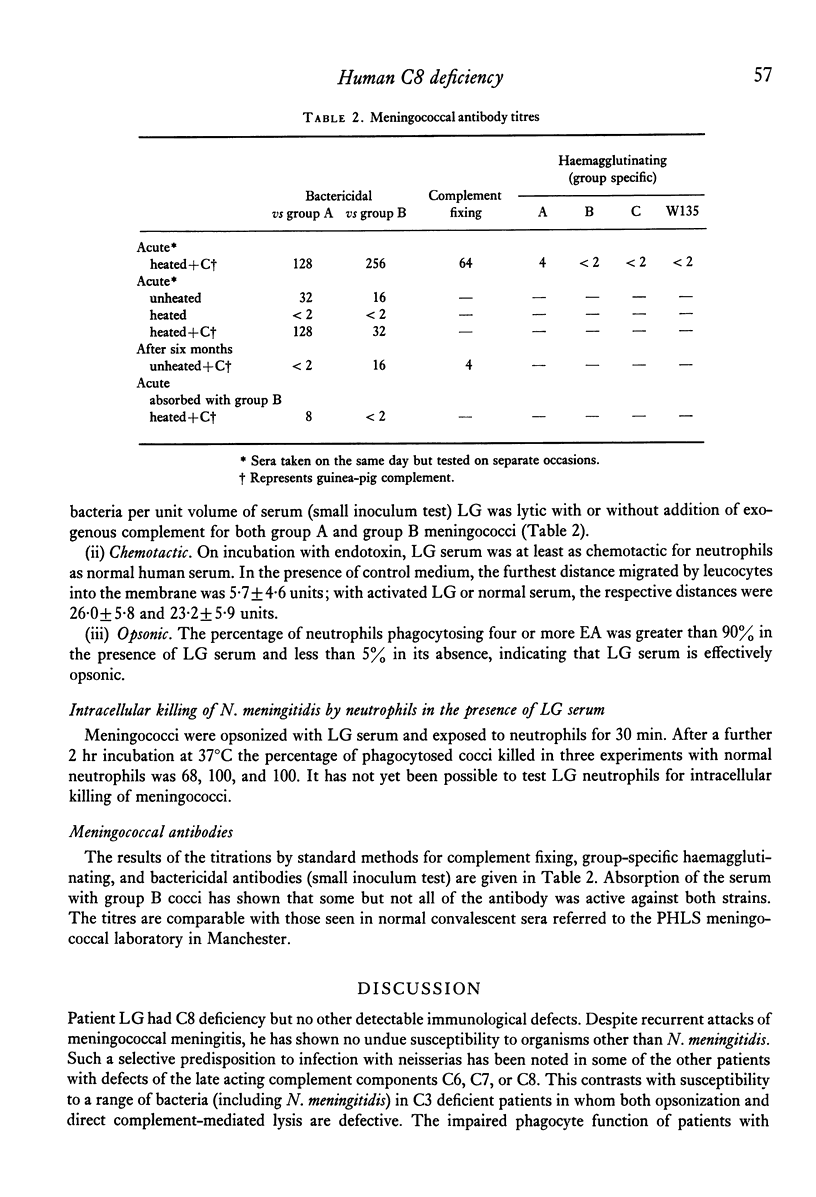
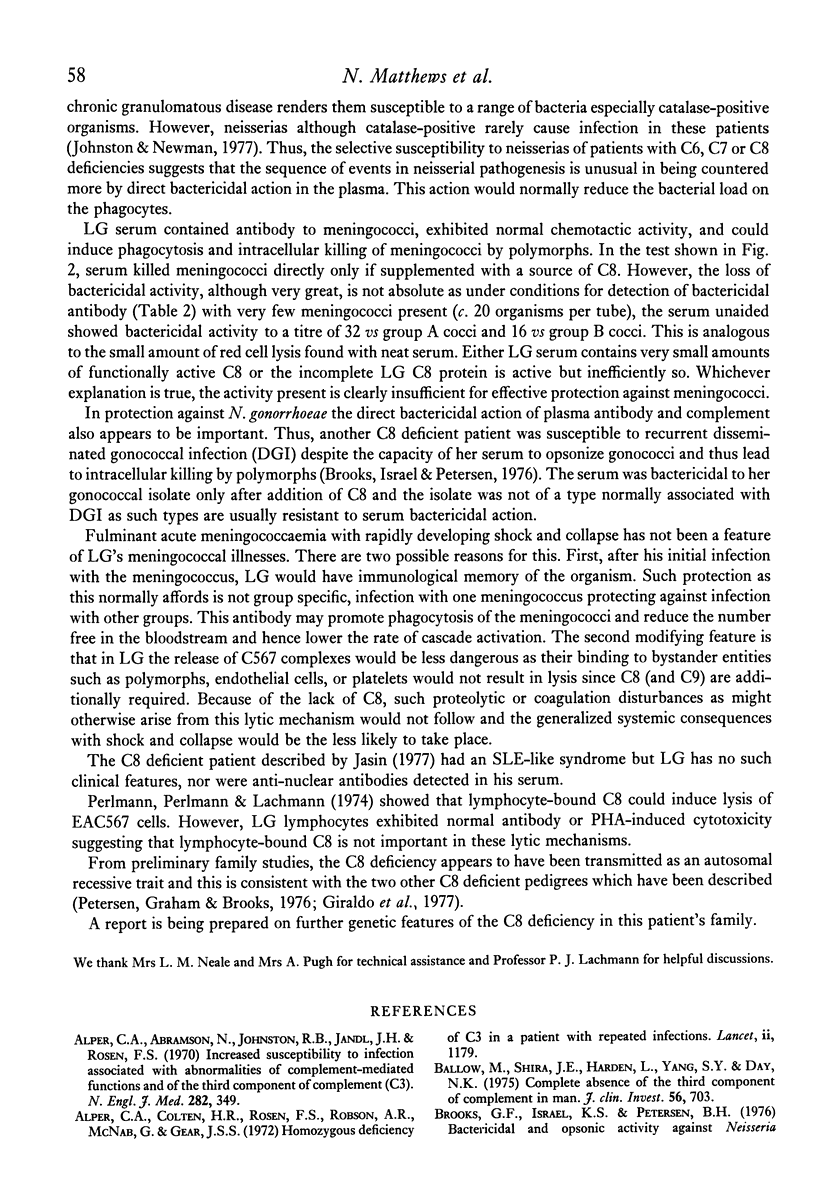
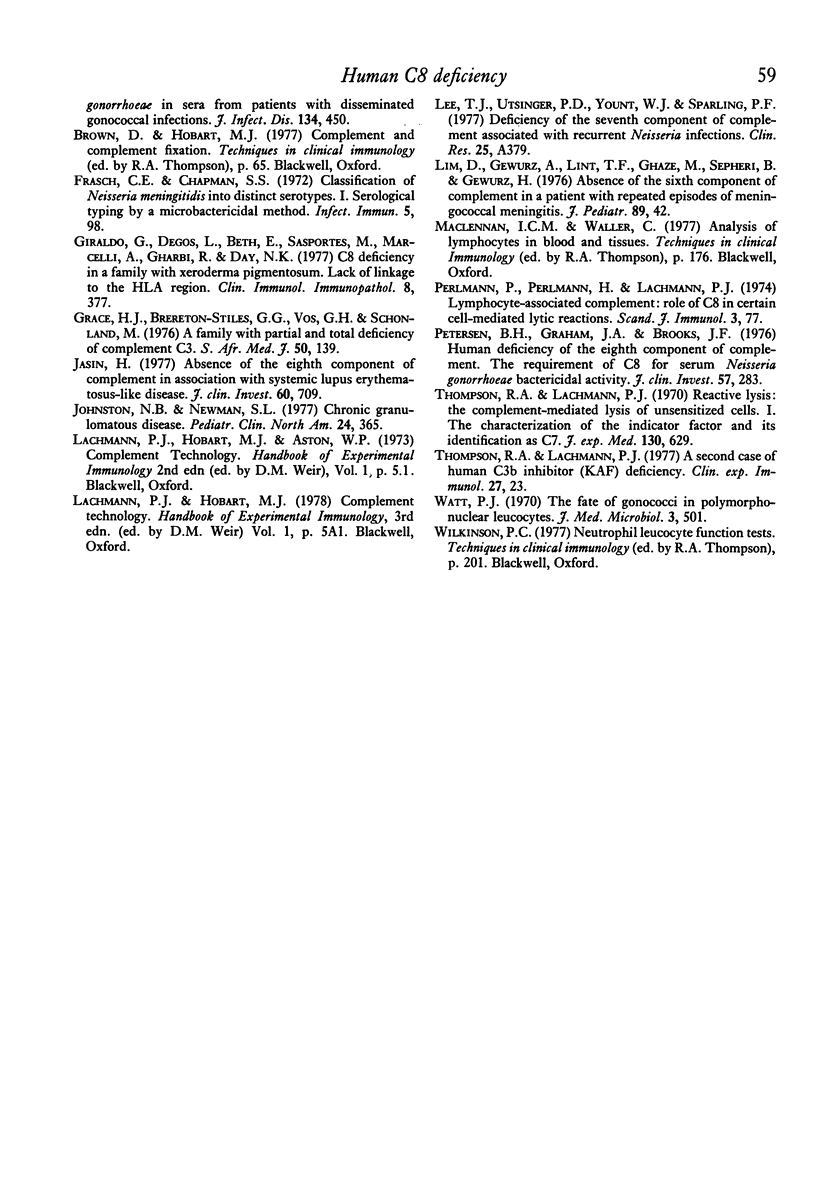
Images in this article
Selected References
These references are in PubMed. This may not be the complete list of references from this article.
- Alper C. A., Colten H. R., Rosen F. S., Rabson A. R., Macnab G. M., Gear J. S. Homozygous deficiency of C3 in a patient with repeated infections. Lancet. 1972 Dec 2;2(7788):1179–1181. doi: 10.1016/s0140-6736(72)92598-6. [DOI] [PubMed] [Google Scholar]
- Ballow M., Shira J. E., Harden L., Yang S. Y., Day N. K. Complete absence of the third component of complement in man. J Clin Invest. 1975 Sep;56(3):703–710. doi: 10.1172/JCI108141. [DOI] [PMC free article] [PubMed] [Google Scholar]
- Brooks G. F., Israel K. S., Petersen B. H. Bactericidal and opsonic activity against Neisseria gonorrhoeae in sera from patients with disseminated gonococcal infection. J Infect Dis. 1976 Nov;134(5):450–462. doi: 10.1093/infdis/134.5.450. [DOI] [PubMed] [Google Scholar]
- Frasch C. E., Chapman S. S. Classification of Neisseria meningitidis group B into distinct serotypes. I. Serological typing by a microbactericidal method. Infect Immun. 1972 Jan;5(1):98–102. doi: 10.1128/iai.5.1.98-102.1972. [DOI] [PMC free article] [PubMed] [Google Scholar]
- Giraldo G., Degos L., Beth E., Sasportes M., Marcelli A., Gharbi R., Day N. K. C8 deficiency in a family with xeroderma pigmentosum. Lack of linkage to the HLA region. Clin Immunol Immunopathol. 1977 Nov;8(3):377–384. doi: 10.1016/0090-1229(77)90002-2. [DOI] [PubMed] [Google Scholar]
- Jasin H. E. Absence of the eighth component of complement in association with systemic lupus erythematosus-like disease. J Clin Invest. 1977 Sep;60(3):709–715. doi: 10.1172/JCI108823. [DOI] [PMC free article] [PubMed] [Google Scholar]
- Johnston R. B., Newman S. L. Chronic granulomatous disease. Pediatr Clin North Am. 1977 May;24(2):365–376. doi: 10.1016/s0031-3955(16)33424-1. [DOI] [PubMed] [Google Scholar]
- Lim D., Gewurz A., Lint T. F., Ghaze M., Sepheri B., Gewurz H. Absence of the sixth component of complement in a patient with repeated episodes of meningococcal meningitis. J Pediatr. 1976 Jul;89(1):42–47. doi: 10.1016/s0022-3476(76)80924-9. [DOI] [PubMed] [Google Scholar]
- Perlmann P., Perlmann H., Lachmann P. Lymphocyte-associated complement: role of C8 in certain cell-mediated lytic reactions. Scand J Immunol. 1974;3(1):77–84. doi: 10.1111/j.1365-3083.1974.tb01235.x. [DOI] [PubMed] [Google Scholar]
- Petersen B. H., Graham J. A., Brooks G. F. Human deficiency of the eighth component of complement. The requirement of C8 for serum Neisseria gonorrhoeae bactericidal activity. J Clin Invest. 1976 Feb;57(2):283–290. doi: 10.1172/JCI108279. [DOI] [PMC free article] [PubMed] [Google Scholar]
- Thompson R. A., Lachmann P. J. A second case of human C3b inhibitor (KAF) deficiency. Clin Exp Immunol. 1977 Jan;27(1):23–29. [PMC free article] [PubMed] [Google Scholar]
- Thompson R. A., Lachmann P. J. Reactive lysis: the complement-mediated lysis of unsensitized cells. I. The characterization of the indicator factor and its identification as C7. J Exp Med. 1970 Apr 1;131(4):629–641. doi: 10.1084/jem.131.4.629. [DOI] [PMC free article] [PubMed] [Google Scholar]



